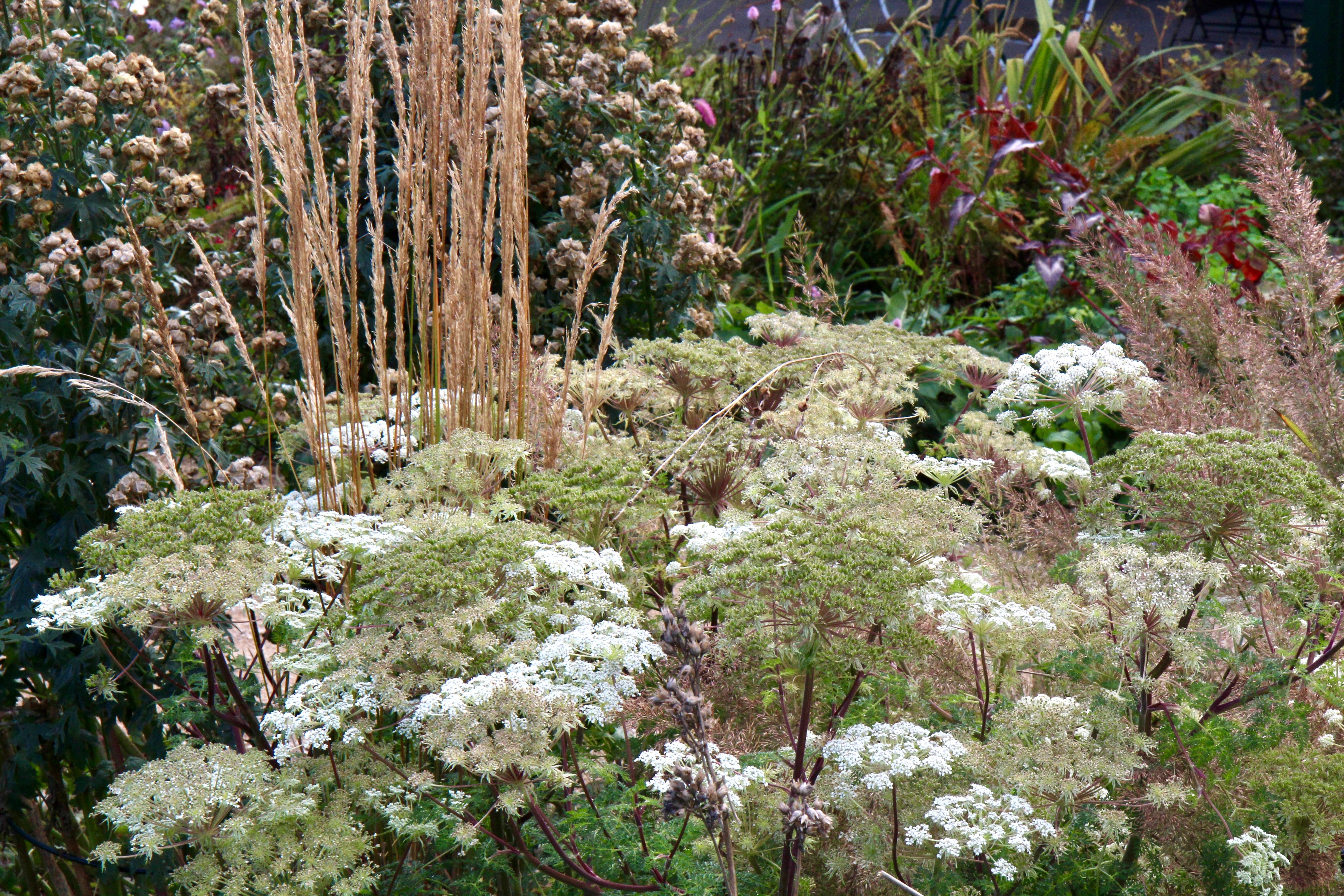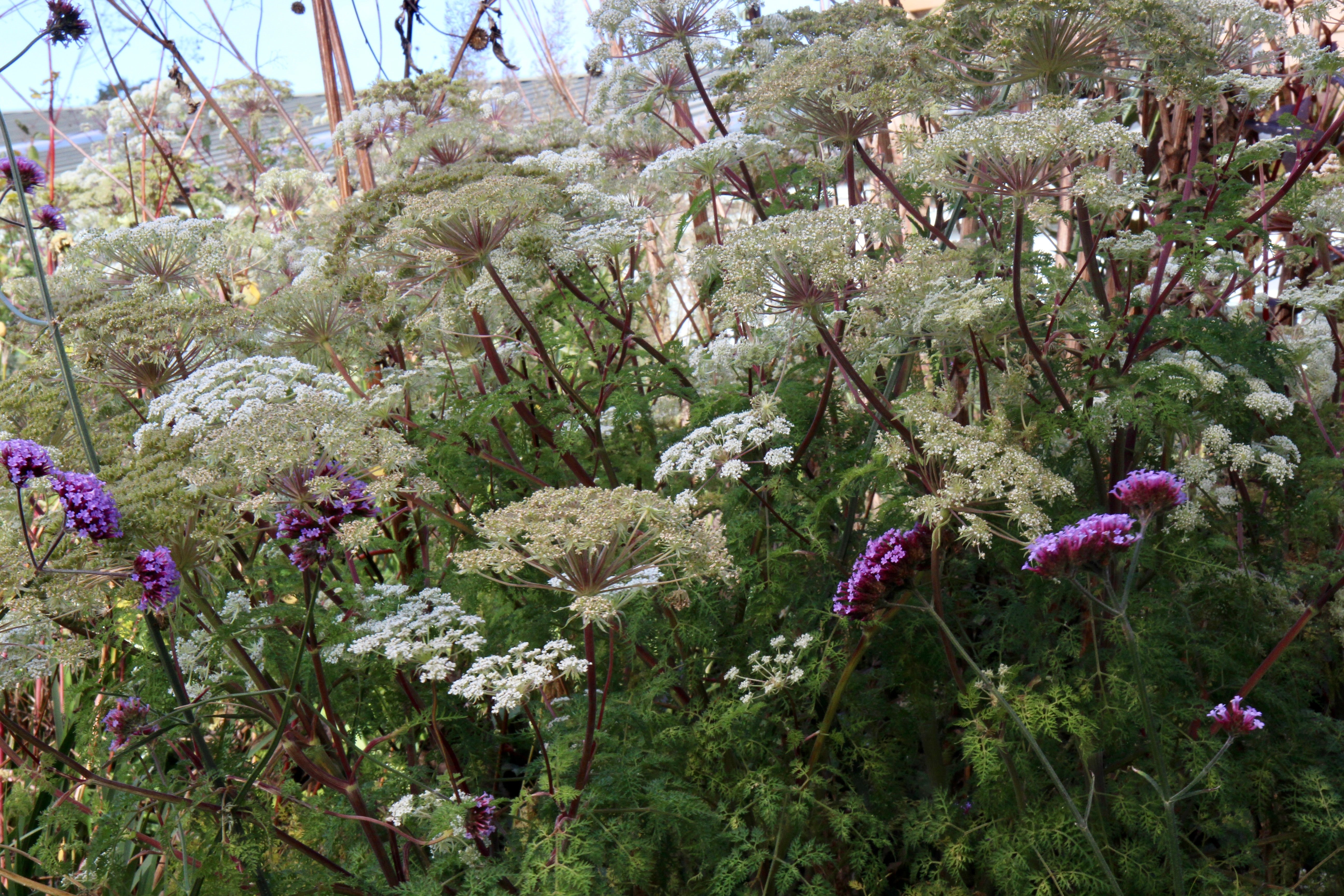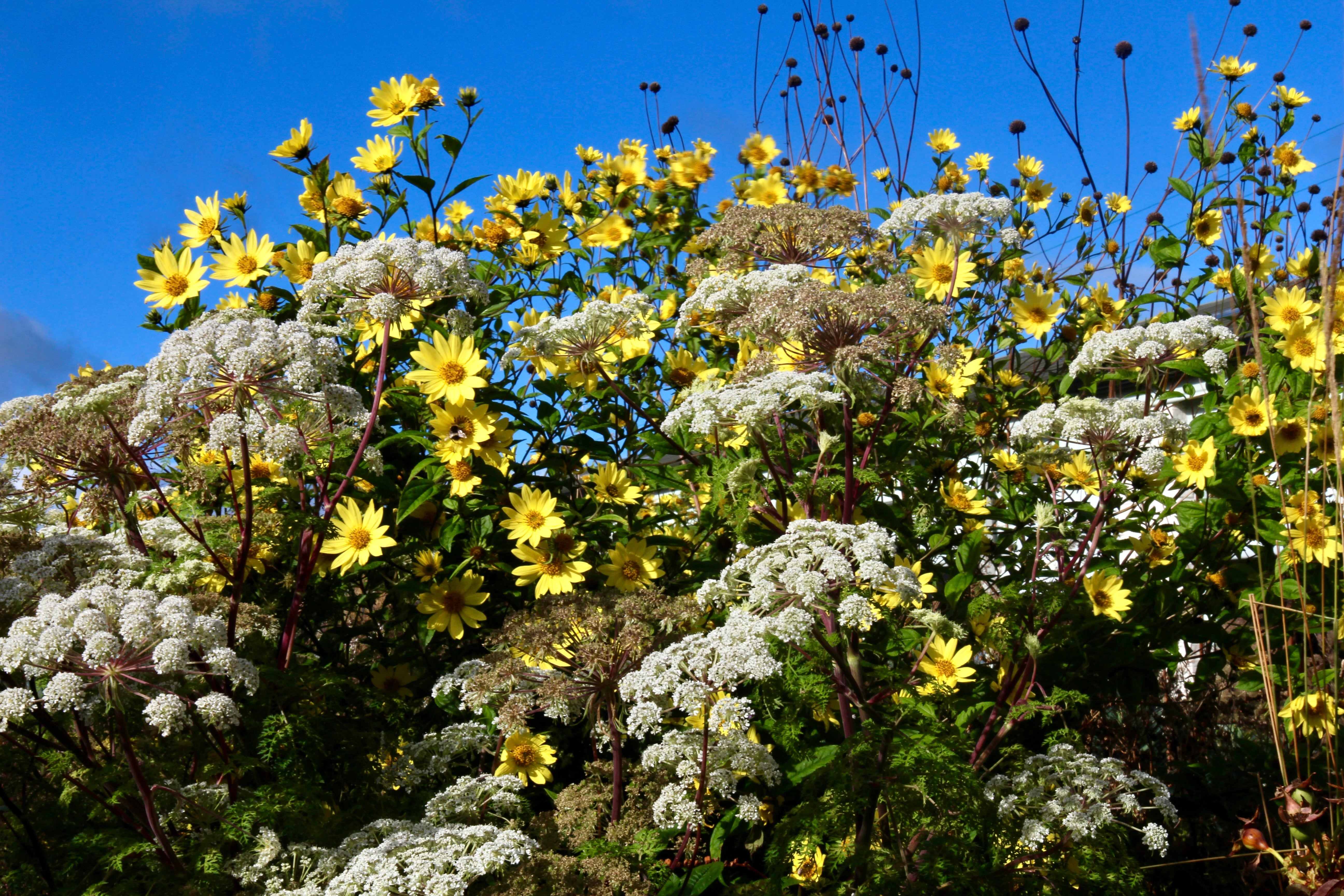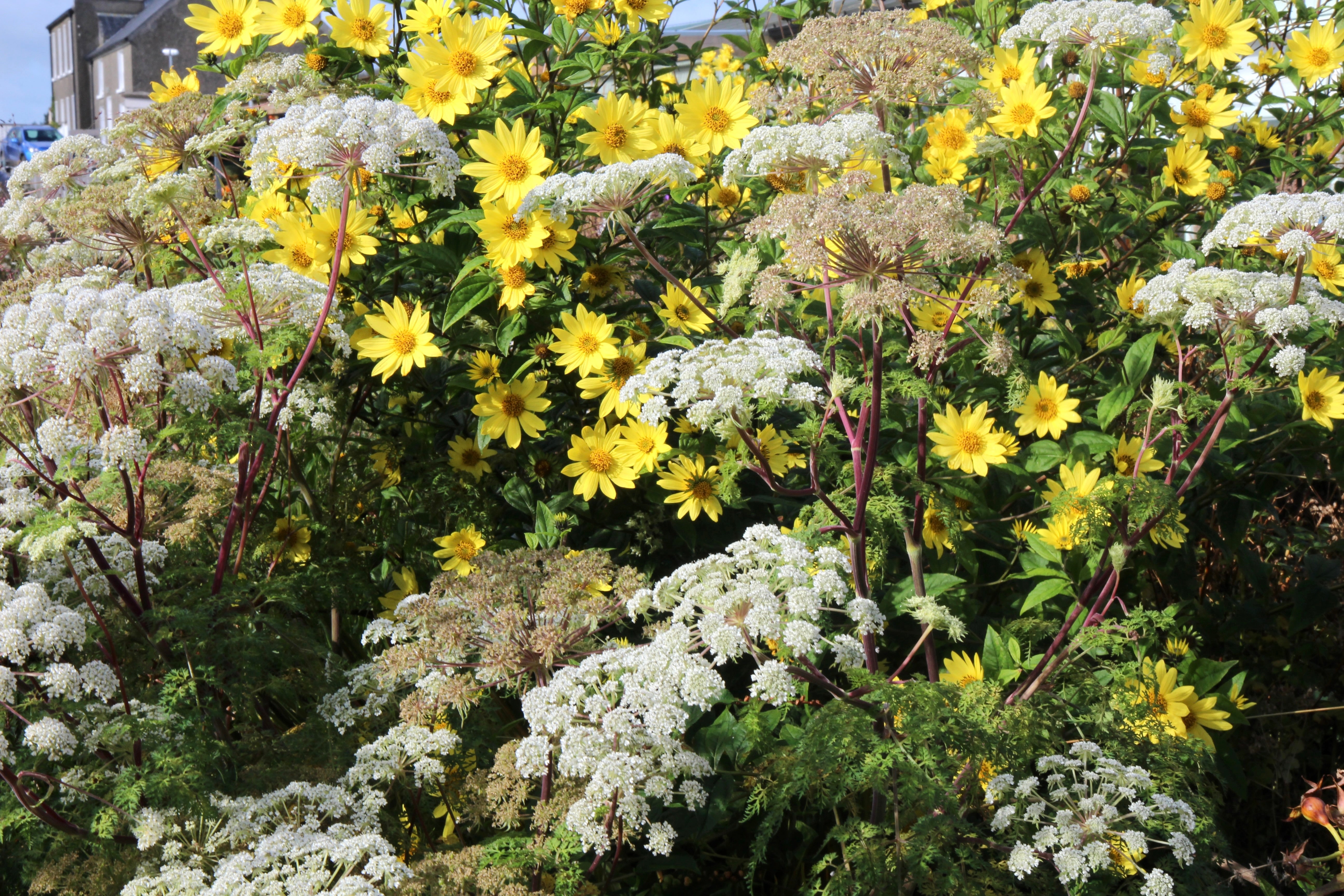Selinum wallichianum
Approx. 0.5 litre pot
About this cultivar:
Selinum wallichianum is native to the Himalayas and is known for its delicate, finely divided leaves and striking purple-infused stems. The flattened white umbels of flowers, which bloom in late summer, add a sparkling touch to the plant's overall appearance.
A versatile plant. It is a great addition to any garden that would like to add a touch of refinement and delicacy, but it is also a great addition to a garden that wants a bit of wildness, or even as a specimen plant. The RHS agree and thus it has the Royal Horticultural Society Award of Garden Merit (RHS AGM).
I like it with paired with Helianthus 'Lemon Queen' and Verbena bonariensis, as in some of these photos.
Also known as Himalayan cow parsley, Himalayan wild chervil, or Wallich milk parsley. It is named for Danish botanist Nathaniel Wallich (1786-1854). Wallich was superintendent of the Royal Botanic Garden, Calcutta, from 1817 to 1846 where he prepared a catalogue of more than 20,000 specimens, known informally as the 'Wallich Catalogue'. 20,000 - can you imagine?
- Position: Full sun, partial shade
- Soil: Almost any soil, grows well in Ballyrobert
- Flowers: July, August, September
- Other features: Royal Horticultural Society Award of Garden Merit (RHS AGM), Grows well in Ballyrobert
- Hardiness: H6 - Hardy in all of UK and northern Europe (-20 to -15°C), Fully hardy - grows well in Ballyrobert!
- Habit: Clump forming, bushy
- Foliage: Deciduous
- Height: 135 - 180 cm (4.5 - 6 ft)
- Spread: 135 - 180 cm (4.5 - 6 ft)
- Time to full growth: 2 to 5 years
- Plant type: Herbaceous Perennial
- Colour: Green, white
- Goes well with: Delphinium, Helianthus, and Verbena. Any tall perennial really.
About this genus:
Selinum is a group of herbaceous plants in the parsley (Apiaceae) family. Commonly known as cow parsley or wild chervil, these plants are native to Europe, Asia, and North Africa. They are commonly found in meadows, pastures, and along roadsides.
Most plant in the genus have feathery, finely divided fern like leaves and flattened umbels of tiny flowers in spring and summer.
While the genus is primarily known for its ornamental value, some species have been used in traditional medicine. For example, the roots of the common cow parsley have been used to treat respiratory problems, to stimulate the appetite, and even as an aphrodisiac.
In gardens they are relatively low maintenance plants. They perform best when planted in the mythical ‘moist well drained soil’ but will grow most places that aren’t swamps or deserts. Even if they don’t grow well they can make quite an impact, so are always worth a try. They can be cut back after blooming to encourage a second flush of flowers, and often dry out at the end of season to provide winter seed head interest.
While ideal in creating a wild, natural feel in the garden, Selinum is also a good companion plant for other tall perennials such as Delphinium, Helianthus, and Verbena (see photos!). A great choice for adding an airy and delicate touch to the garden.








